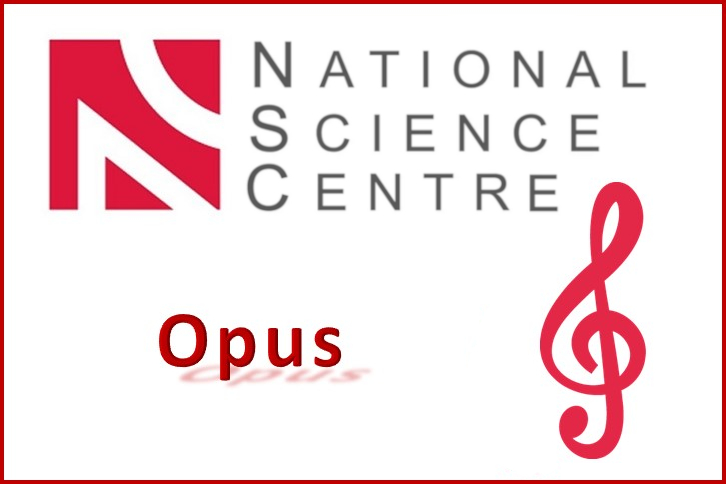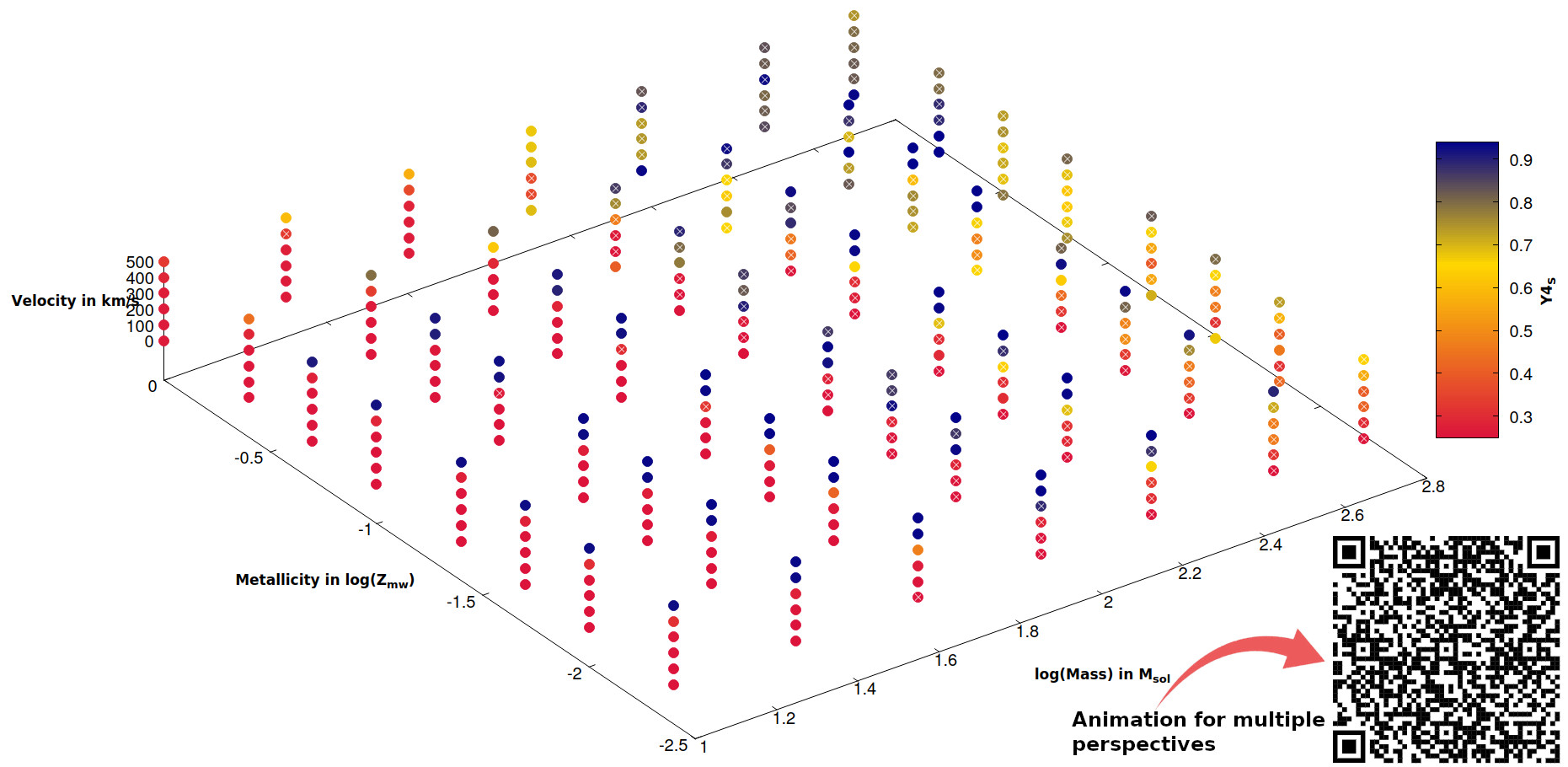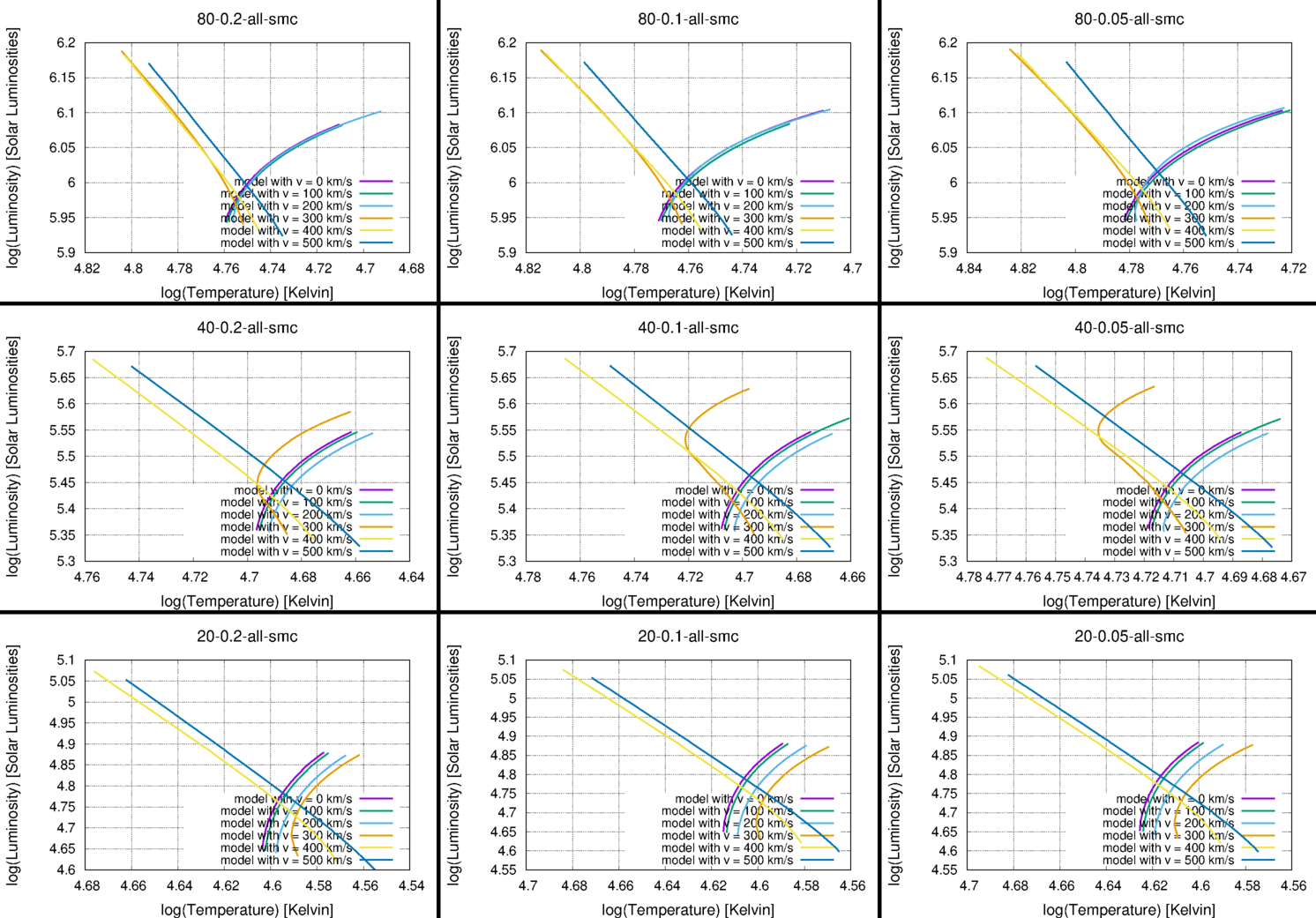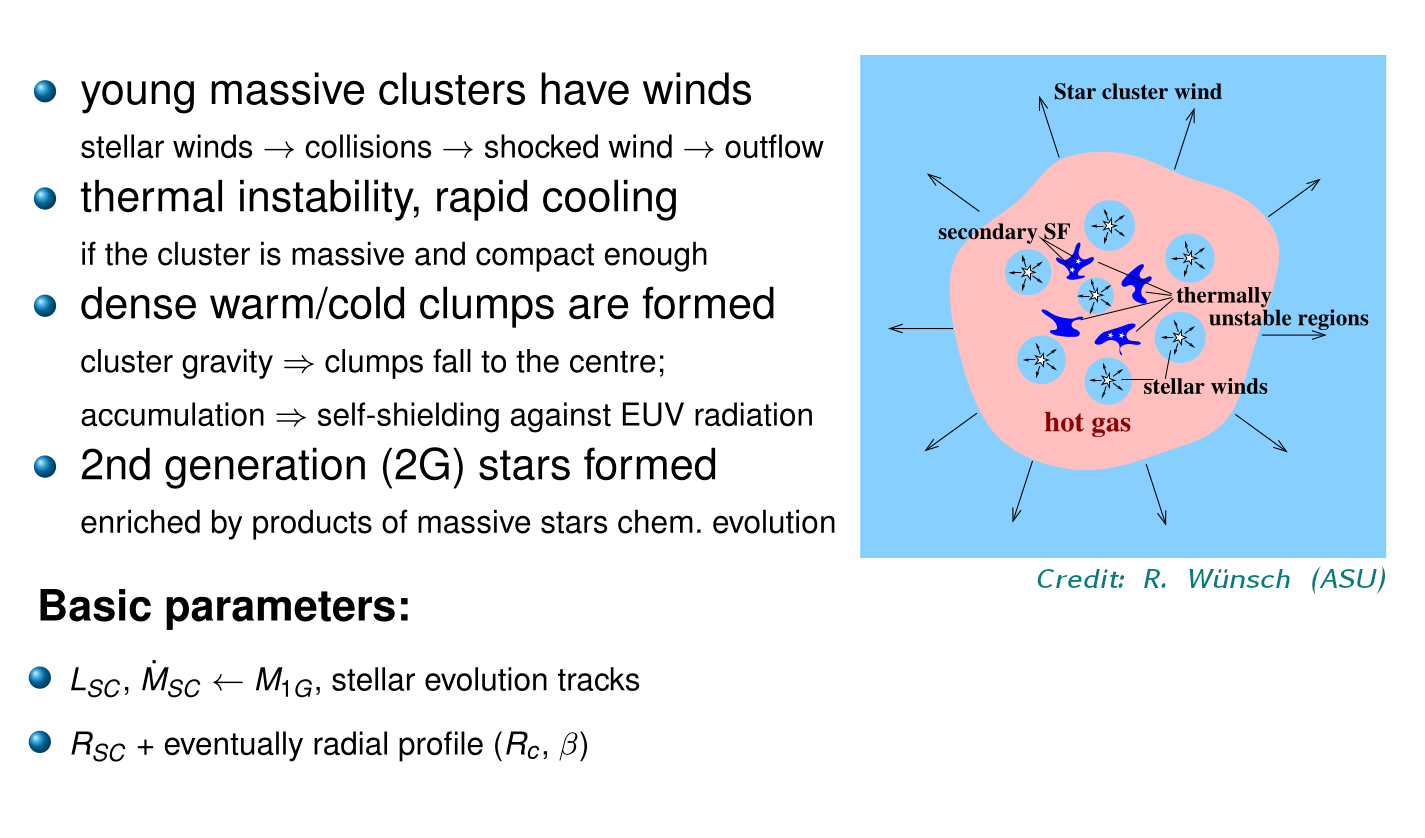In contrast to the ‘normal’ evolution of stars (with core-envelope structure) in our vicinity, models show that a different kind of evolution is possible:
Rotation enhances the mixing in massive stars. This facilitates longer lifetimes and different surface abundances, and in extreme cases may lead to (complete or partial) so-called chemically homogeneous evolution (Yoon & Langer 2005). The chemical composition is no longer layered but instead homogeneous over the whole star.
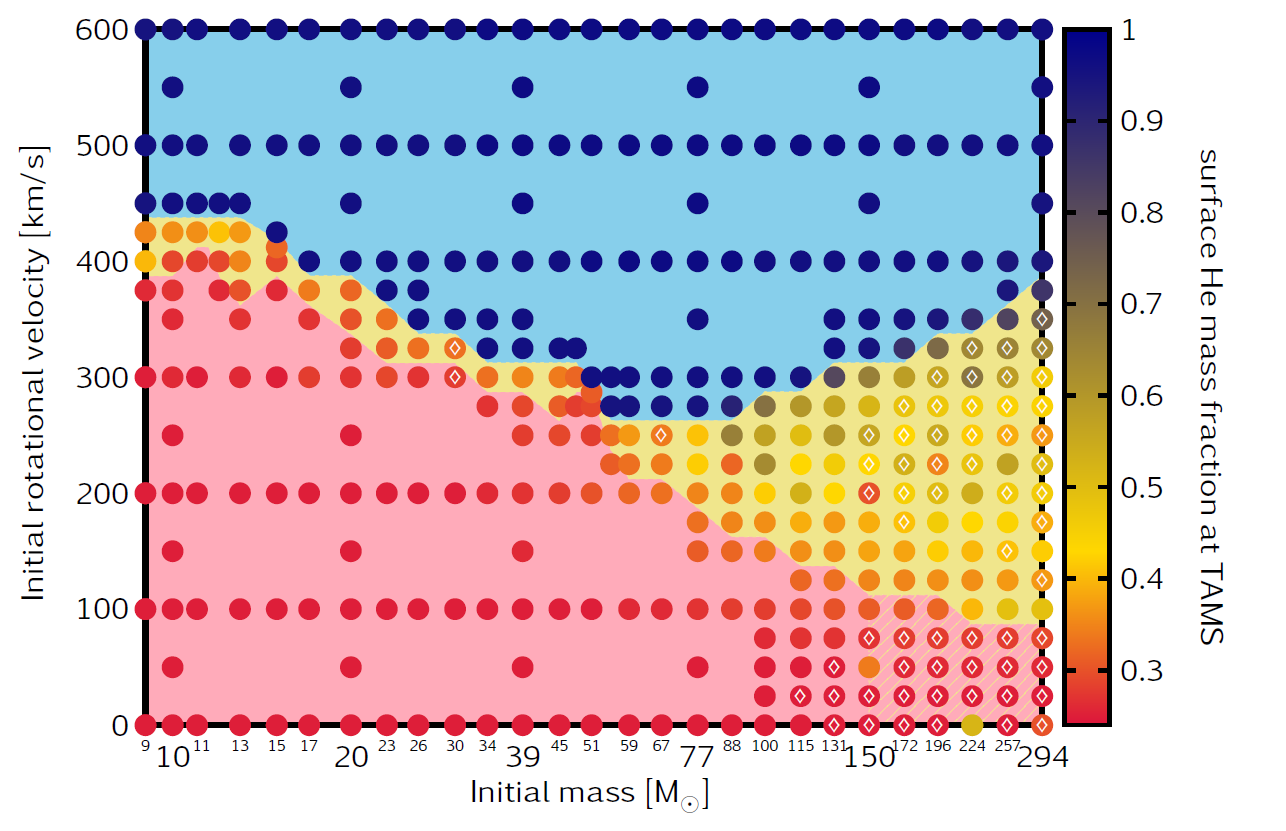
Fig. 1: Models from Szécsi et al. (2015), Z=0.02 Z☉. Each dot represents one model sequence at the end of the main sequence, with a specific set of initial velocity and mass. The corresponding Helium Mass Fraction at the surface is displayed with color, with red color indicating low (around 0.25) and blue color a high (up to around 1.0) helium mass fraction. One can see that there are three areas differentiated, relating to a 'normal' evolution (red), a chemically homogeneous one (blue) and some transitional evolution with a mixture (yellow).
Szécsi et al. (2015) showed (by means of models with metallicity of the metal-poor dwarf galaxy I Zwicky 18) that this evolutionary behavior is more likely for higher masses and velocities (cf. Fig. 1). The resulting models have a higher (up to around 100%) Surface Helium Mass Fraction (blue in contrast to red color) and a higher temperature (among other attributes) at the end of the main sequence.

